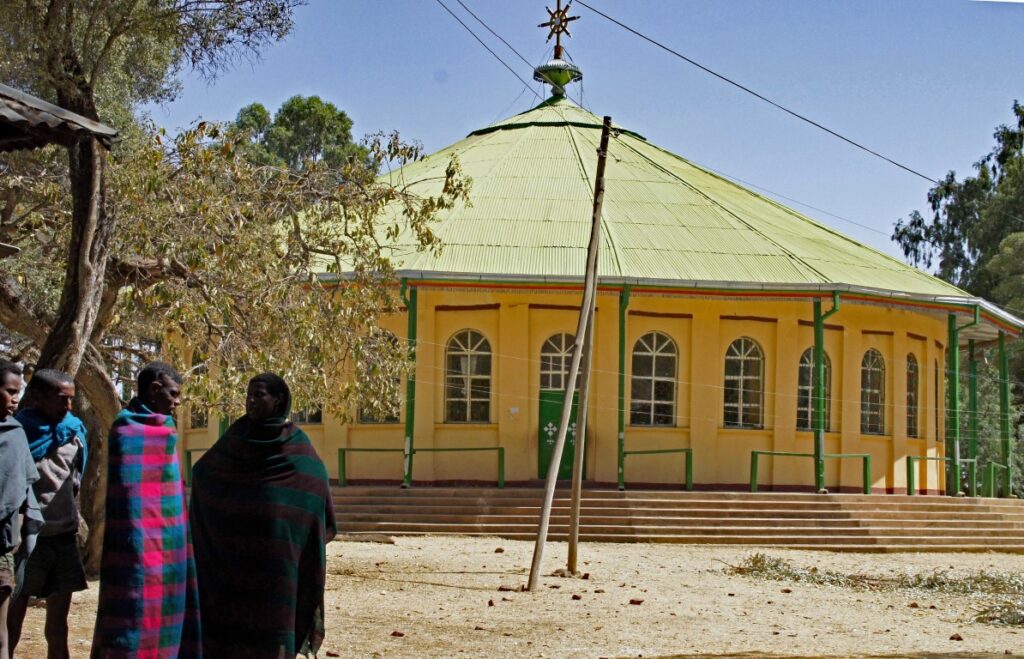
type: RECENTLY BUILT
CHURCH WITH
CIRCULAR PLAN
17th CENTURY AND LATER
bichena ghiorghis
bichena is the capital of the gojjam province, roughly south of lake tana.
the church was built and decorated during the second half of the 18th century, but repainted completely a century later during the reign of negus tekle haymanot. why? a king could enhance his status considerably by building his own palace or painting a church.
the church, built on a seven stepped high plinth, has no outer wall. instead a simple green pipe system supports the eaves and provides water drainage. a door in the yellow painted wall gives acces to the makdas.

behind the east wall of the makdas the sacred tabot rests. therefore instead of a door, there is a window. on the left shutter melchisedek brings bread and wine to abraham. on the next abraham is about to sacrifice his son isaac, when an angel of the lord brings him a sacrificial lamb. to the right mary is depicted as patroness of the virgins of debre zeit (mount of olives)
the grid like ornaments in the frames represent red, white and blue tiles in the colors of the dutch flag. the white ones imitate dutch delft blue tiles.
(for further details about these tiles, refer to the second last picture in the narga selassi church).
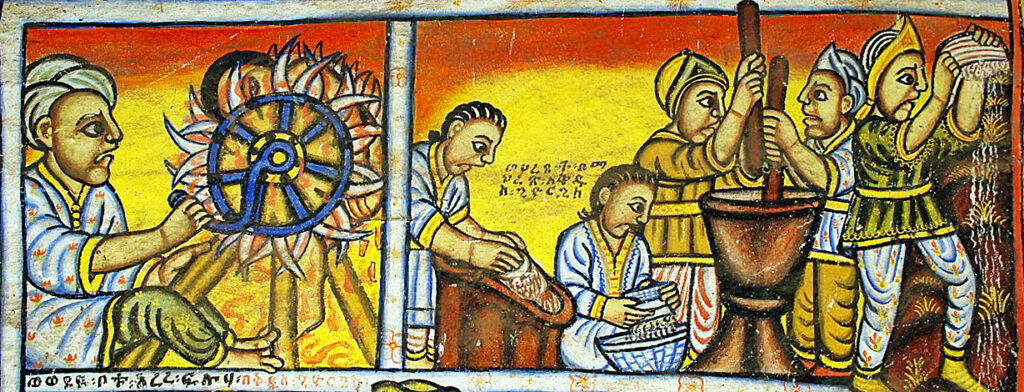
the church is dedicated to saint george, born between 275 and 285. during his military career he became an officer in the army of diocletian. this roman emperor was an enthusiastic persecutor of christians. when george was exposed as a christian, diocletian had him tortured in various ways. this had no physical effect on him, untill the emperor had him beheaded.
this picture looks quite harmless, untill you see it in its broader context.

torture scenes seem to be popular in ethiopian churches. that might be the reason why so many churches are dedicated to saint george.
evildoers are always portrayed in profile, one eyed and ugly. in this painting one of the two executioners stabilizes george’s head. his co-worker pulls george’s tongue out using pincers. it enables him to cut it off in its full length.
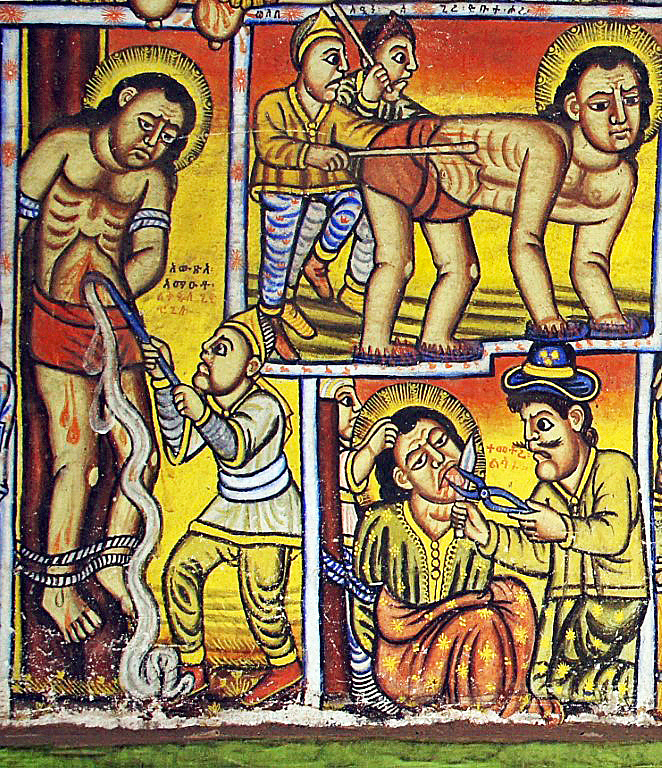
left:
george is hanging foot- and handcuffed, while the executioner rips open his belly, with a crowbar. the saint’s entrails are coming out and fall to the floor on the criminal’s shoe.
top:
for this event the executioners prepared four mini beds of nails, which they hammered onto george’s hands and feet. beating him with their sticks, they force him to move forward on all four.

the evildoer on the left stabilizes again the head of his victim. this time saint george gets boiling oil for a drink. quite logical he keeps his mouth shut, making the oil flow down his face. the boiler is so hot that the executioner needs a mop to protect his left hand. the sadist even uses his victims body as an instrument to fulfill his job. with his left leg he stands on george’s feet, with the other one he climbs onto his victim’s knees, seeking the appropriate level to carry out his atrocities.
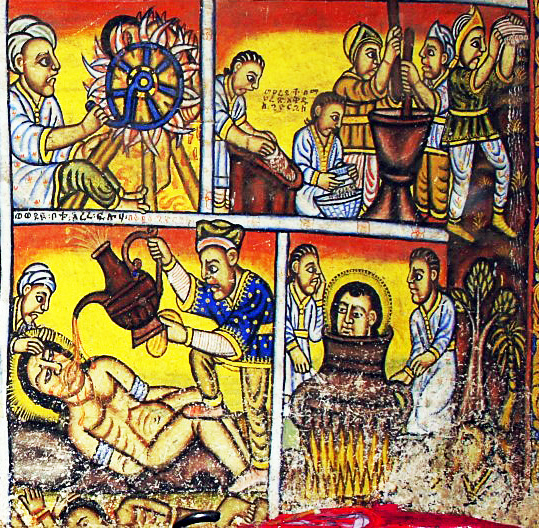
top left:
the saint is locked into a circular cage. his executioner turns a wheel to which dozens of knives are attached. these cut small bloody slices off the saint’s body, that fall to the ground like minced meat.
top right:
the saint has been dried on a hot grill for further processing (next page). two evildoers dressed in white, grate parts of the dried body. then they put it into a mortar where it is pounded by two executioners using heavy pestles. one of the five scatters the human grains into the open to feed the birds.
bottom right:
the saint is boiled.
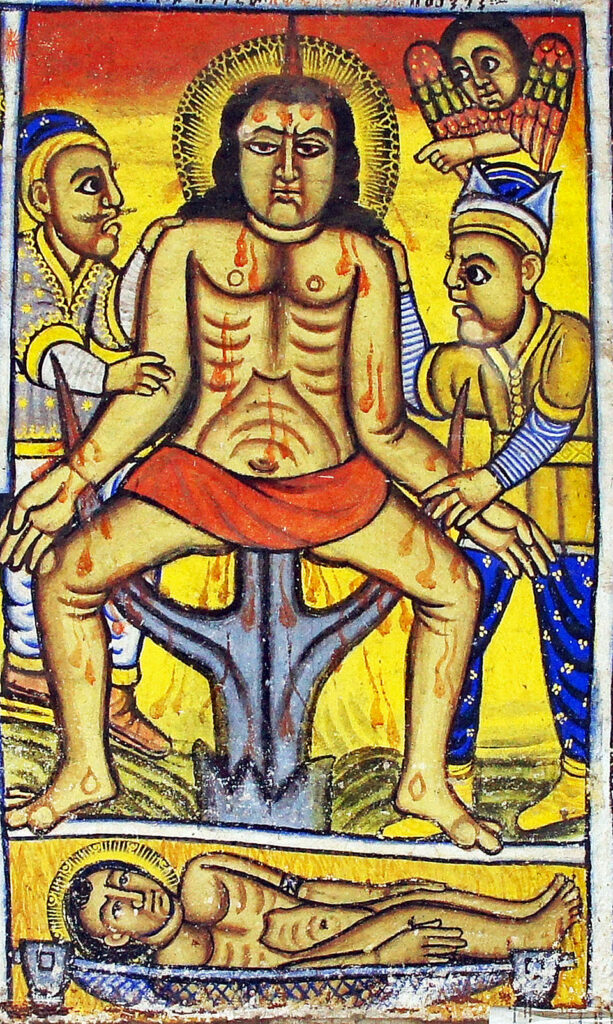
bottom:
the martyr’s body is dried on a metallic grid for further processing in the mortar (previous page).
top:
the ultimae instrument of torture is a sort of giant trident. two executioners have lifted george high up to make him sit on the highest central prong. then they let him gently slide down, so that the outer prongs pierce through his thighs and arms. this operation causes eight wounds in his limbs and one in his skul. the tenth wound, where the blood spurts out, was of course pre-existing.
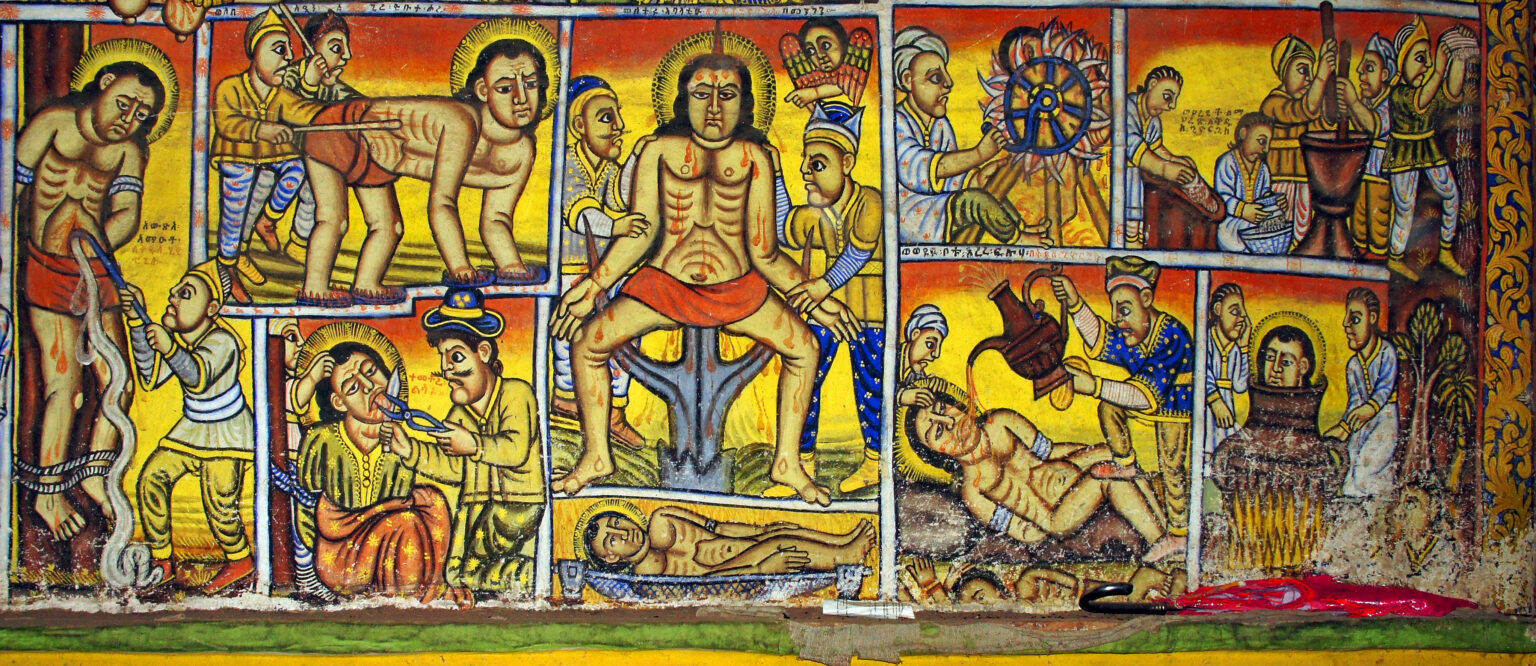
none of the data above are facts. (art) historians agree: saint george is a product of human imagination.
